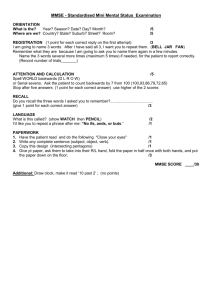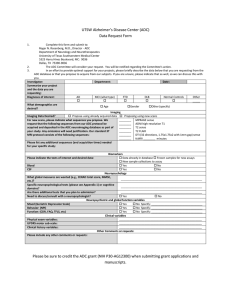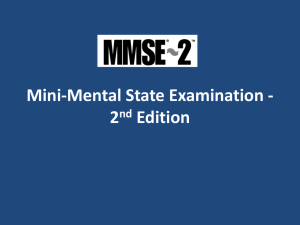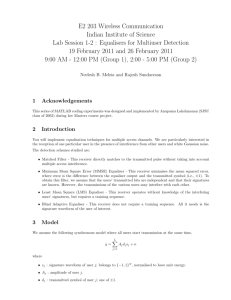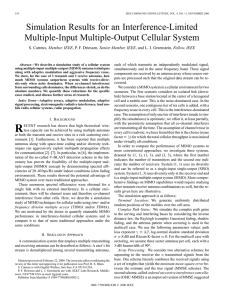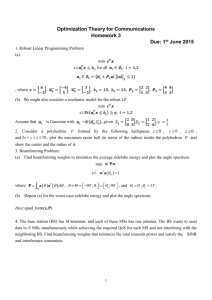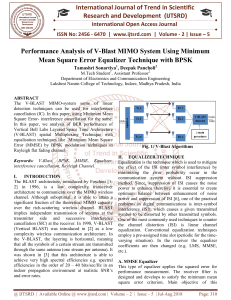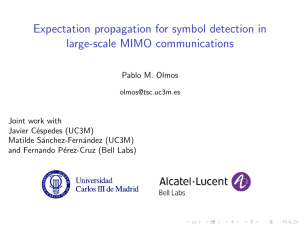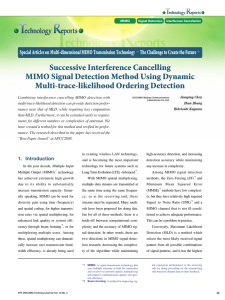Aug. 24, 2010_by Gil..
advertisement
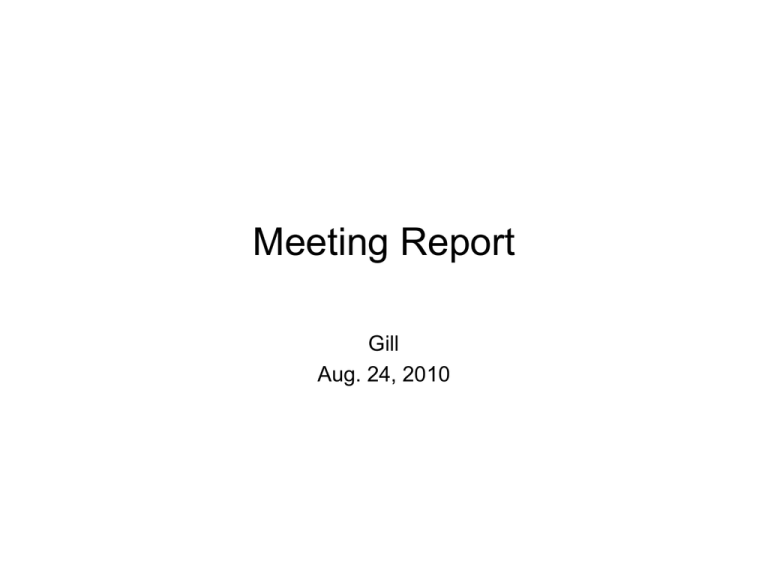
Meeting Report
Gill
Aug. 24, 2010
Letter -- simulation
Sum rate
DIA-MMSE
• DIA-MMSE: Since DIA is suboptimal, it should be operated for Tx
first, then MMSE for Rx during each iteration.
2
Letter -- simulation (cont.)
4×4 3 links
3
Letter -- simulation (cont.)
3×3 3 links
• Which case to choose in the letter?
‒ {3x3, 3} or/and {4x4, 3}?
4
Letter – Larry’s comments
• Title: A new distributed interference alignment algorithm for
multiuser MIMO networks.
– Should “Max SNR” be added in the title? Compared with MLDIA, this is the main improvement of MS-DIA.
• One of old algorithms, named as Max-SINR or MMSE?
• The classification in section III (algorithm description part): 3 or 4
subsections?
• The contribution of the letter
– Compared with ML-DIA, MS-DIA has better performance.
– Compared with MMSE, MS-DIA has faster convergence.
5
Distributed Power Control and
Interference Alignment for MIMO BC
Networks
System model
MIMO-BC
Motivation
• Larry: use different SNRs for
each link, taking path loss and
errors in the channel into
account.
• Doug: MIMO-BC and MIMOMAC are realistic cases in
802.11ac.
• Power constraints of the
network.
System model (cont.)
• Downlink network (original network)
– BS/AP with M antennas
– K users with Nk antennas and one data stream each
K
– DL channel: yk H kVk xk H kV j x j nk
j 1, j k
– SINR of the kth stream/user:
pk | U kH H kVk |2
dl
k
1
K
j 1, j k
p j | U kH H kV j |2
• Uplink network (dual network)
– SINR of the kth stream/user:
qk | VkH H kHU k |2
ul
k
1
K
j 1, j k
q j | VkH H Hj U j |2
• Problem to solve: beamformer and power optimization.
8
General algorithm – BF&PC
• Step 1: consider downlink channel with fixed and given qk and Vk
– Update vector pk by a certain power control method
– Optimize vector Uk by beamforming method.
• Step 2: consider uplink channel with fixed and given pk and Uk
– Update qk by a power control method
– Optimize vector Vk by beamforming method.
• Step 3: test a stopping criterion
• Beamforming method: IA, ZF, MMSE.
• Power control method: waterfilling, binary power control, pricing
algorithm, etc.
• Convergence of iterative method: monotonic increase of SINR with a
bound.
9
Simulation
• Case 1: {4x4, 3}
– AP with 4 Tx antennas
– 3 users with 4 Rx antenna each
• Case 2: {3x3, 2}
– AP with 3 Tx antennas
– 2 users with 3 Rx antenna each
• Single SS per user in the MU-MIMO
• Uniform power allocation
• Results for 2000 channel realizations
• Iterative algorithms
– MMSE: done to beam-form the 1 SS of each user
– MS-DIA
10
Simulation & discussion
4×4 3 links
3×3 2 links
• As optimal filter, MMSE is widely used for BF&PC in literature.
• MS-DIA achieves the same performance as MMSE at high SNR.
(Similar to MIMO X Channel)
• The difference between MIMO-BC/MAC and MIMO X Channel?
11
